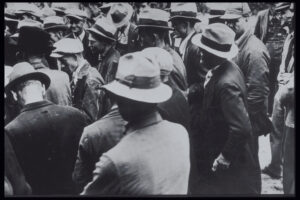Towards A New Great Depression
The comments below are an edited and abridged synopsis of an article by Jim Rickards
Thirteen Republican congressmen crossed the aisle late Friday night to help pass a $1.2 trillion infrastructure bill. The original proposal was $2.3 trillion, so some Republicans consider it a victory.
But it creates programs that will likely remain in place once the bill’s spending authorization expires in five years. As Ronald Reagan said, “Nothing lasts longer than a temporary government program.”
And at 2,700 pages, you can be sure there’s plenty of wasteful pork in it. Only about one-third of that money goes toward actual infrastructure such as bridges, tunnels, roads and airports.
The rest is for vague causes like human infrastructure, which includes training, oversight and other government intrusion favoured by the Democrats.
Still, there was enough real infrastructure in the bill to gain bipartisan support. But this so-called bipartisan infrastructure bill is only one part of a more ambitious infrastructure package.
Up for discussion: Don’t move, or I’ll shoot; 103,000 lost jobs; no temporary blip; no full recovery until 2045; stimulus; and the New Depression, continued.
All this is characteristic of a great depression, which is understood to be a prolonged period of growth that is either below the long-term trend or below potential growth. That’s the reality we face.
Meanwhile, inflation has hit a 30-year high. Wholesale prices have increased 8.6% since last October, and the CPI is at its highest in almost 40 years.
Economists debate whether this recent rise in inflation is temporary or here to stay, but in the short run it doesn’t matter. Inflation is here today and your purchasing power is going down.
Unfortunately, things will probably get worse.

